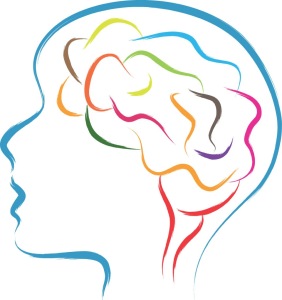From siblings to parents and partners to coworkers, each one of us expresses a unique emotional signature–the individual collection of traits that characterize our personality. If given the choice, some parents might prefer to cozy-up with a good book on Saturday night, while others would rather dance the night away. One child might spend an entire afternoon constructing a Lego masterpiece while another flits from one enticing diversion to the next. From Myers-Briggs to the Enneagram, many  systems have been devised to describe and categorize the untold variations of personality and temperament. Neuroscientist Richard Davidson has pinpointed distinctive patterns in the brain that correspond to six emotional styles that account for personality traits such as shyness, sensitivity, optimism, and adaptability. Let’s take a look at Davidson’s six brain-based styles and the implications for parents and families.
systems have been devised to describe and categorize the untold variations of personality and temperament. Neuroscientist Richard Davidson has pinpointed distinctive patterns in the brain that correspond to six emotional styles that account for personality traits such as shyness, sensitivity, optimism, and adaptability. Let’s take a look at Davidson’s six brain-based styles and the implications for parents and families.
In The Emotional Life of Your Brain, written with Sharon Begley, Davidson describes the neurological foundations for these six dimensions of emotional style. We all fall somewhere along the continuum of each style, and as Davidson explains, there are advantages and disadvantages to the extremes of each style, so no position is inherently bad or good. An understanding of emotional style, our strengths and vulnerabilities and those of our loved ones, breeds compassion for one another and provides crucial information for initiating desirable change.
The Six Emotional Styles:
1. Resilience refers to how quickly or slowly someone recovers from challenges and upsets. Do they bounce right back, no worse for the wear, or does it take them a long time to process and recover from challenges and setbacks?
2. Outlook describes the tendency toward optimism or pessimism. Does someone have a generally positive outlook or are they more prone to negativity?
3. Social Intuition deals with the ability to read social cues. Highly socially intuitive people pick up on non-verbal communication and tune-in easily to what is going on with others. People at the other end of the spectrum tend to find interpersonal encounters puzzling.
4. Self-Awareness is based on a person’s self-knowledge. Are they acutely aware of themselves, their feelings and sensations or somewhat out of touch?
5. Sensitivity to Context means acting appropriately to the situation. Can someone distinguish suitable behavior depending on the circumstances or do they have trouble discerning appropriate conduct in a given situation?
6. Attention refers to the ability to focus attention. Intense focus may make someone less aware of outside interruptions while another person’s attention may wander with little provocation.
Implications: Why Emotional Style Matters and What We Can Do About It
Nurture Affects Nature In case you missed the latest briefing on the nature vs. nurture debate, the data is unanimous:  nurture profoundly affects nature. We don’t need a brain scientist to tell us that the consistent loving attention of parents, teachers, caregivers, and family members assists children to flourish, but Davidson provides convincing evidence: “Even if a child has a genotype that predisposes him to be anxious, being raised in a relaxed and nurturing environment can dial down those genes, quite literally, by altering the extent to which particular genes are expressed. Similarly, a child who has a genetic predisposition for shyness can develop into a sociable adolescent and adult if her parents do not shelter her and indulge her shyness but instead gently encourage her to interact with other kids. The environment does not just shape behavior or even brain function. It also affects whether genes turn on or off and therefore, which inherited traits we express.”
nurture profoundly affects nature. We don’t need a brain scientist to tell us that the consistent loving attention of parents, teachers, caregivers, and family members assists children to flourish, but Davidson provides convincing evidence: “Even if a child has a genotype that predisposes him to be anxious, being raised in a relaxed and nurturing environment can dial down those genes, quite literally, by altering the extent to which particular genes are expressed. Similarly, a child who has a genetic predisposition for shyness can develop into a sociable adolescent and adult if her parents do not shelter her and indulge her shyness but instead gently encourage her to interact with other kids. The environment does not just shape behavior or even brain function. It also affects whether genes turn on or off and therefore, which inherited traits we express.”
 No Two Alike Every person expresses a unique emotional signature based on their brain circuitry; and just like snowflakes, no two are alike. We all have to accept and adjust to differences in one another. One sibling may focus effortlessly and get homework done in a jiffy without any prodding while another may struggle to keep her nose in the books. It is not fair to compare children once you know they’re running different software! A child who takes longer to recover from upsets is not intentionally being difficult and needs more reassurance and parental patience than a child who bounces back quickly. Children high on the self-awareness scale may find itchy clothes intolerable while their less sensitive playmates do not. Greater understanding allows parents, teachers, and caregivers to treat children according to their unique style without comparing or castigating them for their differences.
No Two Alike Every person expresses a unique emotional signature based on their brain circuitry; and just like snowflakes, no two are alike. We all have to accept and adjust to differences in one another. One sibling may focus effortlessly and get homework done in a jiffy without any prodding while another may struggle to keep her nose in the books. It is not fair to compare children once you know they’re running different software! A child who takes longer to recover from upsets is not intentionally being difficult and needs more reassurance and parental patience than a child who bounces back quickly. Children high on the self-awareness scale may find itchy clothes intolerable while their less sensitive playmates do not. Greater understanding allows parents, teachers, and caregivers to treat children according to their unique style without comparing or castigating them for their differences.
Healthy, Wealthy and Wise The wealth generated from our investments in emotional health spreads far and wide because, Davidson insists, “Of all the forms of human behavior and psychological states, the most powerful influence on our physical health is our emotional life…Our Emotional Style affects how we feel about ourselves and those around us, how we behave, how susceptible we are to stress, our cognitive function, and…has physiological consequences that in turn have important downstream effects on the function of our respiratory, immune, cardiovascular, gastrointestinal, and endocrine system.”
Ages and Stages It is important for parents to hold developmentally appropriate expectations for children until they can discern appropriate behavior for themselves. We continually assist children to decipher context: “The mud pies need to stay outside,” and, “Please use quiet voices inside.” Initiating appropriate responses let’s children flex the muscles that strengthen the underlying circuitry such as, “It is OK with me if you use your iPod while we are taking a long drive in the car today,” and, “It is respectful to put your iPod away while we are visiting with Grandma.”
The Promise of Change Although Davidson cautions that research to identify effective brain-based interventions for influencing emotional style remains in it’s infancy, much research, by Davidson and others, demonstrates how mindfulness meditation can significantly improve our emotional and physical health by strengthening the pre-frontal cortex or PFC, the most evolved and masterful area of the brain. According to neuropsychiatrist Daniel Siegel, MD, author of Mindsight, some benefits of a high functioning PFC include: improved body regulation, emotional balance, stress and fear modulation, impulse control, social attunement, and empathy.
The Aging Brain While it’s clear, neurologically speaking, that children undergo dramatic changes over the course of growing up, you may be wondering about the prognosis for adults who would like to make some improvements. The short answer to that question is an emphatic, “Yes, aged and aging brains are totally capable of change!” Although, the long answer to the question, “How do we go about creating that change,” will have to wait until another post…
How have you learned to accept and adapt to the different emotional styles in your family?

